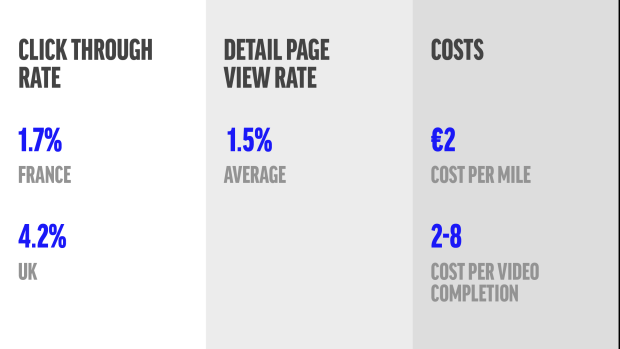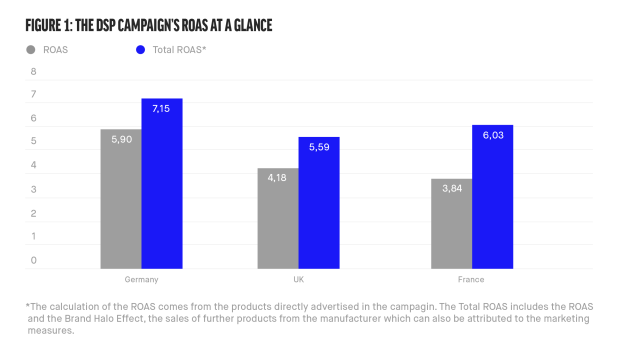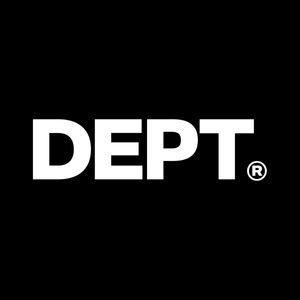
Retargeting: Boosting Sales with Amazon DSP

Among all the powerful programmatic advertising options bundled within Amazon Advertising, retargeting with Amazon Demand Side Platform (DSP) has the most potential. When properly utilised, retargeting can lead to a significant increase in sales directly measurable through KPIs.
What is retargeting?
Simply put, retargeting is a form of programmatic advertising in which ads are shown to customers based on their past behaviour. On Amazon, this includes product searches, detail page views, and product purchases. The company then proceeds to categorise these behaviours in retargeting audience segments, which then serve as the basis for campaign targeting. For instance, if a user searches for an item your brand offers but does not purchase it directly, they will be reminded about this later. An ad for that product will be shown to them on both Amazon and third-party websites. The following visual shows you how retargeting on Amazon works in practice.
By advertising with DSP, you can reach a worldwide audience of over 350 million users across all devices.

Why should you use retargeting?
Since retargeting is based on the customer’s existing interest and prior interactions, it’s the most cost-effective option within programmatic marketing. Indeed, retargeting is the best tool to bring external traffic back to the Amazon ecosystem and onto your product detail pages, while still maintaining high Return on Ad Spend (ROAS) and direct sales growth. Coupled with Amazon’s authority on customer data analysis, no other advertising platform can deliver better and more precise targeting.
Furthermore, Amazon automatically excludes customers who have seen the ad and subsequently bought the product from its retargeting segment since those people are unlikely to buy that same product again. Also, many consumers do not like seeing repeated ads for a product they have recently purchased. This feature is crucial and allows you to save money and impressions by excluding those with a low or non-existent probability of converting. On the other hand, certain types of products (fast-moving consumer goods, especially) are suitable for retargeting directly after purchase to promote their Subscribe & Save rate.
How to implement retargeting in your campaign
Now that you know why you should include retargeting for your 'Always On' campaigns in your marketing measures, let’s take a look at what options there are and how you can implement them. Because DSP offers you a range of retargeting options:
- Product Views segment targets users who viewed the product detail page of your item but have not purchased it within/up to the last 90 days.
- Product Purchases targets customers who bought your product for up to a year in the past and might be interested in buying it again.
- Product Searches targets users who searched for a keyword related to your product in a given time frame. The keywords are selected by Amazon and cannot be viewed as of yet.
- SIM (Similarities) Product Views segment allows you to reach consumers who have viewed the product detail pages of a competitor and win them over. Keep in mind that similar products are also chosen automatically by the Amazon algorithm.
- Brand Purchases and Brand Views correspond to Product Purchases and Views but targets buyers who purchased any product within the brand’s portfolio.
- Competitor Conquesting, a new option currently being tested in beta, works similarly to SIM Product Views. The added benefit is that you can choose which competitor products you want to target in the segment.
Remember, a correct setup is key for retargeting campaigns. Carefully think about the time frame for your retargeting campaigns. Product type, in addition to other variables, will help you decide when and for how long a product should be advertised. For instance, if a customer purchases baby wipes frequently, it is safe to show them ads for the same product relatively often. A TV set, on the other hand, is a long term buy. These buyers should be excluded from retargeting segments once they complete their purchase.
Product Views are the most common retargeting segments, as they promise the highest ROAS. However, retargeting has other major uses such as cross and upselling. Imagine your customer just bought diapers. By running ads to the Brand Purchases segment, you can try to convince the customer to buy other baby products, such as baby wipes or creams, from you as well. With the Product Purchases segment, you can upsell a bigger pack of diapers with a higher price point. Since ads are shown both on and off Amazon, your message will be shown to the across the internet.
There are several types of ads that your company can use. Dynamic e-commerce Ads are the native advertising option for Amazon and are highly recommended for use in retargeting campaigns. A customer review can be added for ad customisation to products with more than fifteen reviews and an average of more than 3.5 stars. It’s also possible to use standard banner ads and video ads, which are provided by the brand, but those are best used for awareness campaigns rather than for retargeting since their main focus is not on conversion.
Lastly, timing is everything. The frequency at which retargeting ads are shown to consumers should not be too high. If the same creative is shown too often, it may even have the opposite effect.
Retargeting case study: Wacom
The goal of our client Wacom, who manufactures graphic tablets, was to sustainably increase sales across their entire product range. In addition to their classic target group of professional graphic designers, additional segments were identified and approached with a variety of offerings. With the help of Amazon’s first-party customer data, customer groups such as manga fans or creative mothers were targeted.
We focused on ad placements on and off Amazon with the aim of attracting users to the products’ various detail pages. Video Ads with an average Detail Page View Rate (DPVR) of approx. 1.5% and a Click Through Rate (CTR) of 1.7% (FR) to 4.2% (UK) stood out across all countries. Cost-per-video completion was between two and eight cents. By booking placements in the Amazon Christmas Store, customers who were looking for gifts for their loved ones were reached.

Since the overarching goal of the campaign was not brand awareness, but rather the direct promotion of sales, the focus was placed on the DPVR. Amazon’s native ad format, the Dynamic e-commerce Ad, was used for advertising. The ads were delivered in high frequency on mostly inexpensive placements ~€2 CPM (Cost Per Mille) outside of Amazon. In-Market segments were also used to target customers who were already familiar with graphic tablets or products in similar categories but had not yet purchased one.
A large-scale Sponsored Ads campaign was launched at the same time in order to fill the most important placements on the product search pages and pick up Amazon customers who were made aware of the product category through DSP. The Sponsored Ads campaigns themselves made an additional contribution to the campaign’s success with a ROAS of twelve.

The results of this DSP setup can be seen above. Sales increased substantially across all countries. This case is an example of a judiciously coordinated and optimised campaign and is intended to demonstrate that the full potential of Amazon Advertising can only be exploited by combining the individual advertising formats and playing off their strengths.
Is it worth it?
One might think that spending precious advertising budgets on retargeting is unnecessarily putting a dent in your profits. After all, haven’t the users already decided to buy your product? This line of thought has been continuously disproved as the results of our case study show. Customers who have visited your product detail page and did not make the purchase sometimes just need a nudge to finalise their purchase. Retargeting, therefore, does not diminish your profits, it expands them. Moreover, channelling traffic to your detail pages and growing sales ensures more organic traffic due to higher bestseller ranking.
However, this does not mean that retargeting is an end-all-be-all solution. Sponsored Ads and DSP always work best in tandem. When customers are made aware of the product through a retargeting campaign and then search for it on Amazon, a Sponsored Products (SP) ad should lead them directly to it. It’s important to keep in mind that the sale will only count towards the SP even though the retargeting ad was the initial point of contact. Hence, while the ROAS of your retargeting campaign might not look like the numbers above, it might still be contributing decisively to the success of your other marketing measures.













